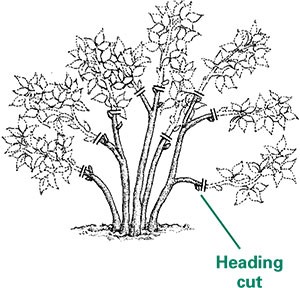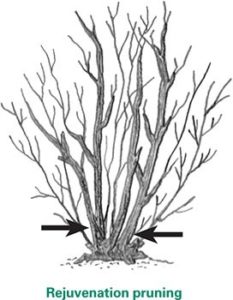Time to Prune Spring-Flowering Shrubs
go.ncsu.edu/readext?691561
en Español / em Português
El inglés es el idioma de control de esta página. En la medida en que haya algún conflicto entre la traducción al inglés y la traducción, el inglés prevalece.
Al hacer clic en el enlace de traducción se activa un servicio de traducción gratuito para convertir la página al español. Al igual que con cualquier traducción por Internet, la conversión no es sensible al contexto y puede que no traduzca el texto en su significado original. NC State Extension no garantiza la exactitud del texto traducido. Por favor, tenga en cuenta que algunas aplicaciones y/o servicios pueden no funcionar como se espera cuando se traducen.
Português
Inglês é o idioma de controle desta página. Na medida que haja algum conflito entre o texto original em Inglês e a tradução, o Inglês prevalece.
Ao clicar no link de tradução, um serviço gratuito de tradução será ativado para converter a página para o Português. Como em qualquer tradução pela internet, a conversão não é sensivel ao contexto e pode não ocorrer a tradução para o significado orginal. O serviço de Extensão da Carolina do Norte (NC State Extension) não garante a exatidão do texto traduzido. Por favor, observe que algumas funções ou serviços podem não funcionar como esperado após a tradução.
English
English is the controlling language of this page. To the extent there is any conflict between the English text and the translation, English controls.
Clicking on the translation link activates a free translation service to convert the page to Spanish. As with any Internet translation, the conversion is not context-sensitive and may not translate the text to its original meaning. NC State Extension does not guarantee the accuracy of the translated text. Please note that some applications and/or services may not function as expected when translated.
Collapse ▲Spring is a colorful time in many of our lawns. While it is exciting to have splashes of color scattered through our landscape, we must think about protecting this color for next year. Timing your pruning activities is an important tool to use to keep the landscape manicured and one that can make or break a plants ability to add colorful blooms in the year to come. As a rule of thumb, spring-flowering shrubs are pruned after flowering. This is because spring-flowering shrubs bloom on one-year-old wood that grew the previous summer. If these shrubs are pruned before flowering, the flower buds that developed last year will be removed and the number of flowers will be reduced or completely eliminated. Some common spring-flowering shrubs are forsythia, lilac, weigela, azalea, viburnum, mock orange, flowering quince, camellia, and rhododendron.
All other plants are better of pruned at other times of the year. Such as, summer flowering shrubs like abelia, butterfly bush, and crape myrtle are generally pruned during the dormant winter season. These shrubs bloom from buds that develop on new wood that grows in the spring of the current year. Pruning them in late winter or early spring promotes vigorous growth early in the summer. And, for non-flowering shrubs, the best time for pruning is during the dormant winter season before growth begins in the spring.
Light, corrective pruning can be done at any time of the year. This means that the Four D’s: dead, diseased, damaged, or double-crossed limbs can and should be pruned out at any time it is needed. Although you need to avoid heavy pruning during the late summer and fall because regrowth may occur and make the plants more susceptible to cold injury. And lastly, do not prune newly planted shrubs unless the limbs are damaged. These plants need all their leaves to encourage root regeneration.
A good pruning job should not be conspicuous! There are five basic techniques for pruning shrubs:
- Pinching – removing the tip of a succulent, green shoot before it becomes woody and firm. Done to reduce length and encourage branching.
- Heading back – cutting a branch back to a healthy bud or branch to stimulate growth and increase bushiness.

- Thinning – removing a branch at its point of origin (ground, parent stem, side branch, etc.) to create a more open plant without stimulating new growth. This method can be used to reduce the overall size of the plant without changing much of its natural form.
- Renewal pruning (rejuvenation) – removing the oldest branches by pruning them near the ground, leaving the younger, more vigorous branches (which may also be pruned). This should only be done every three to five years and works well on multi-stemmed, twiggy shrubs like abelia, deutzia, forsythia, spirea, and weigela, to name a few.

- Shearing – removing the tips of most branches with shearing or hedge clippers. Shearing should be used sparingly as it destroys the natural shape of the plant and inhibits light penetration, eventually causing dieback in the interior of the shrub.




